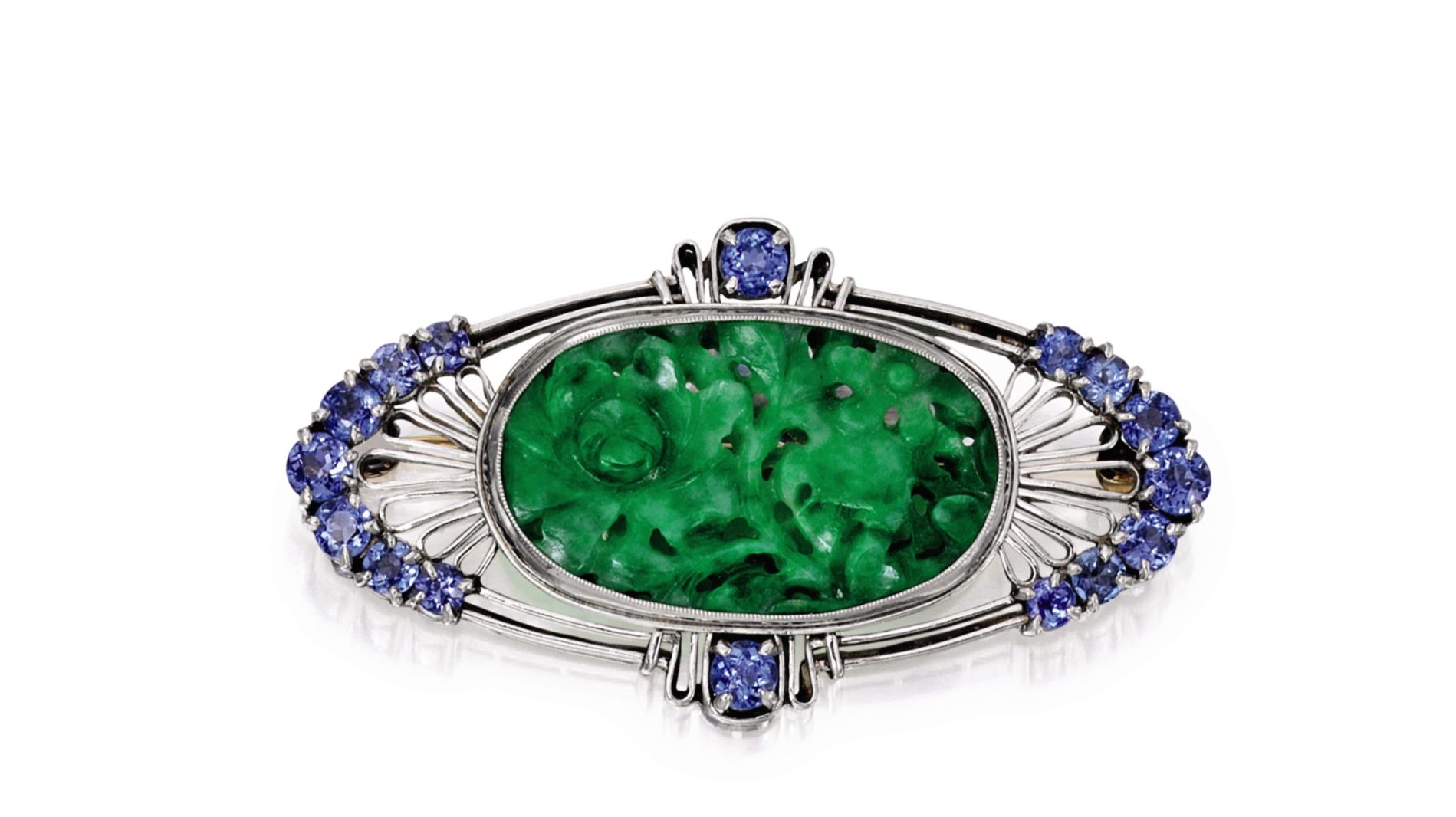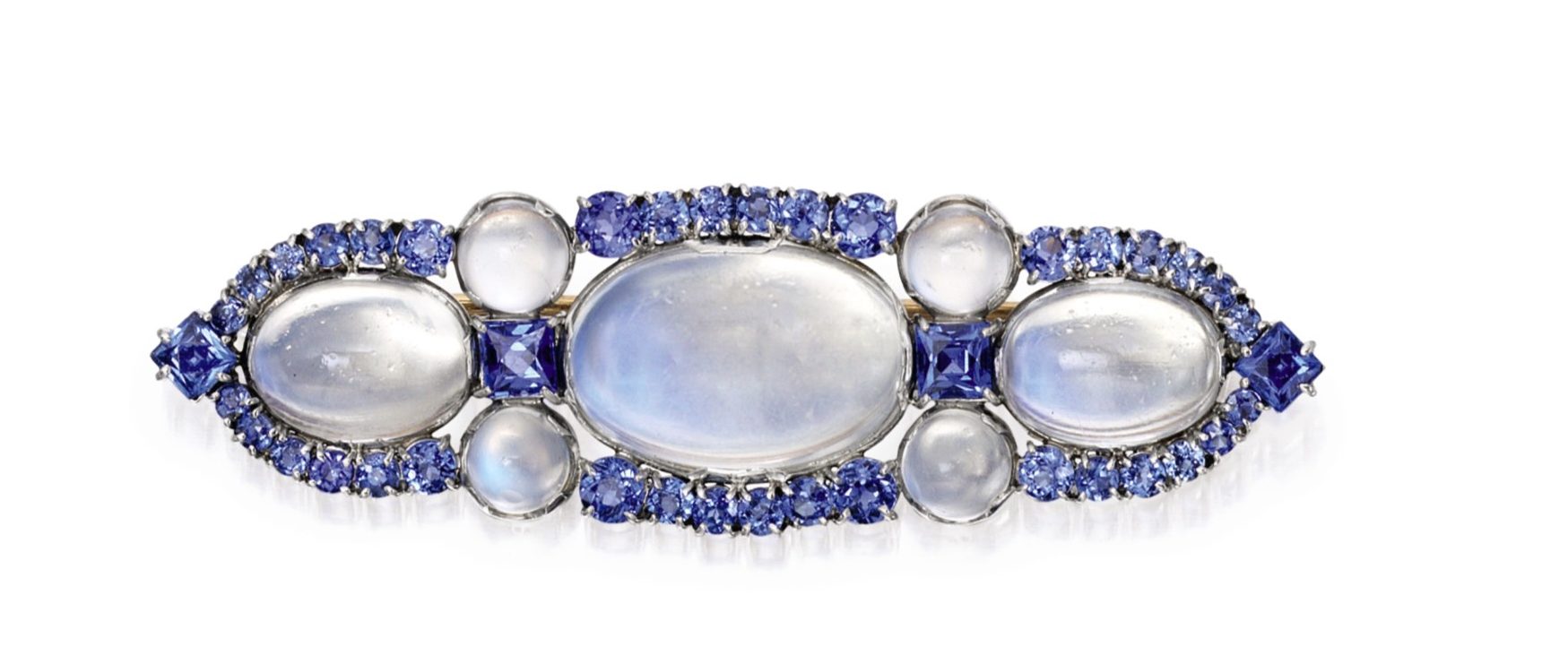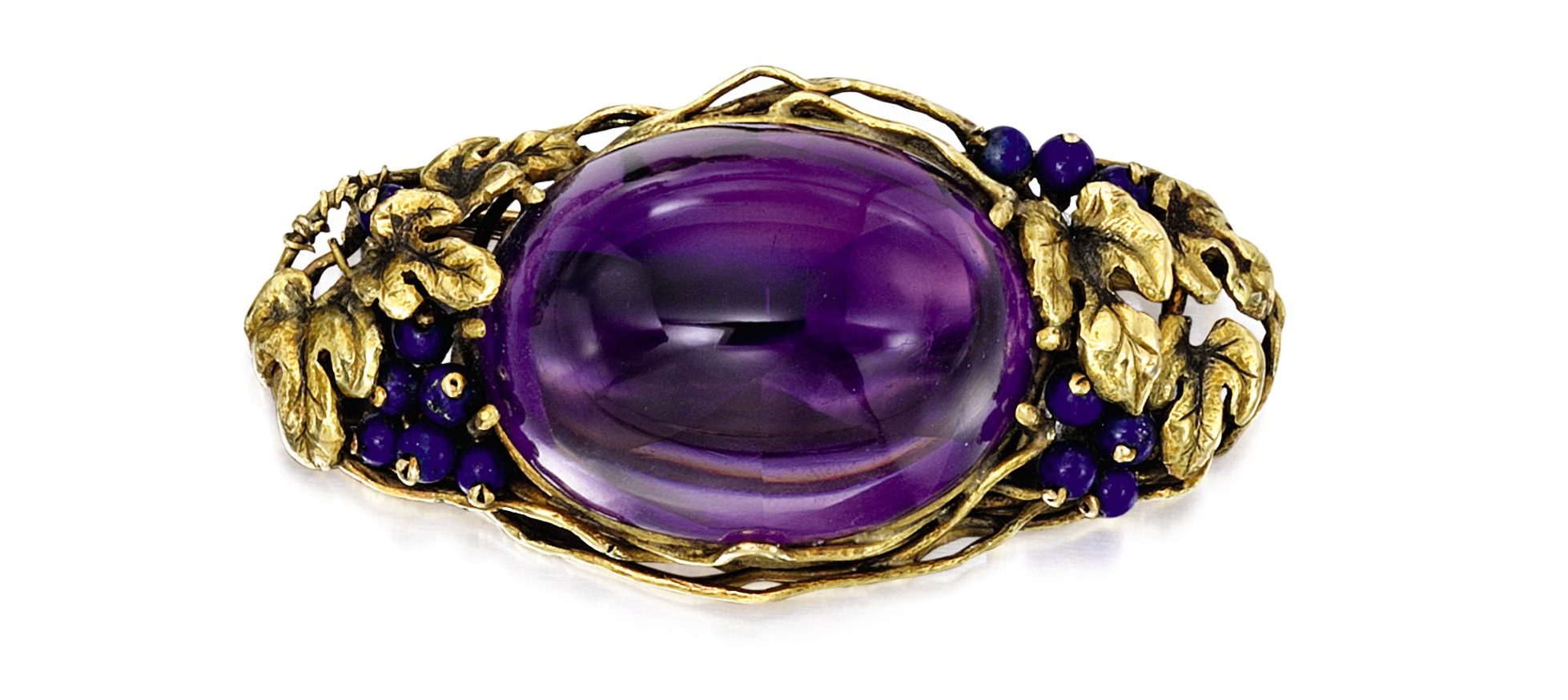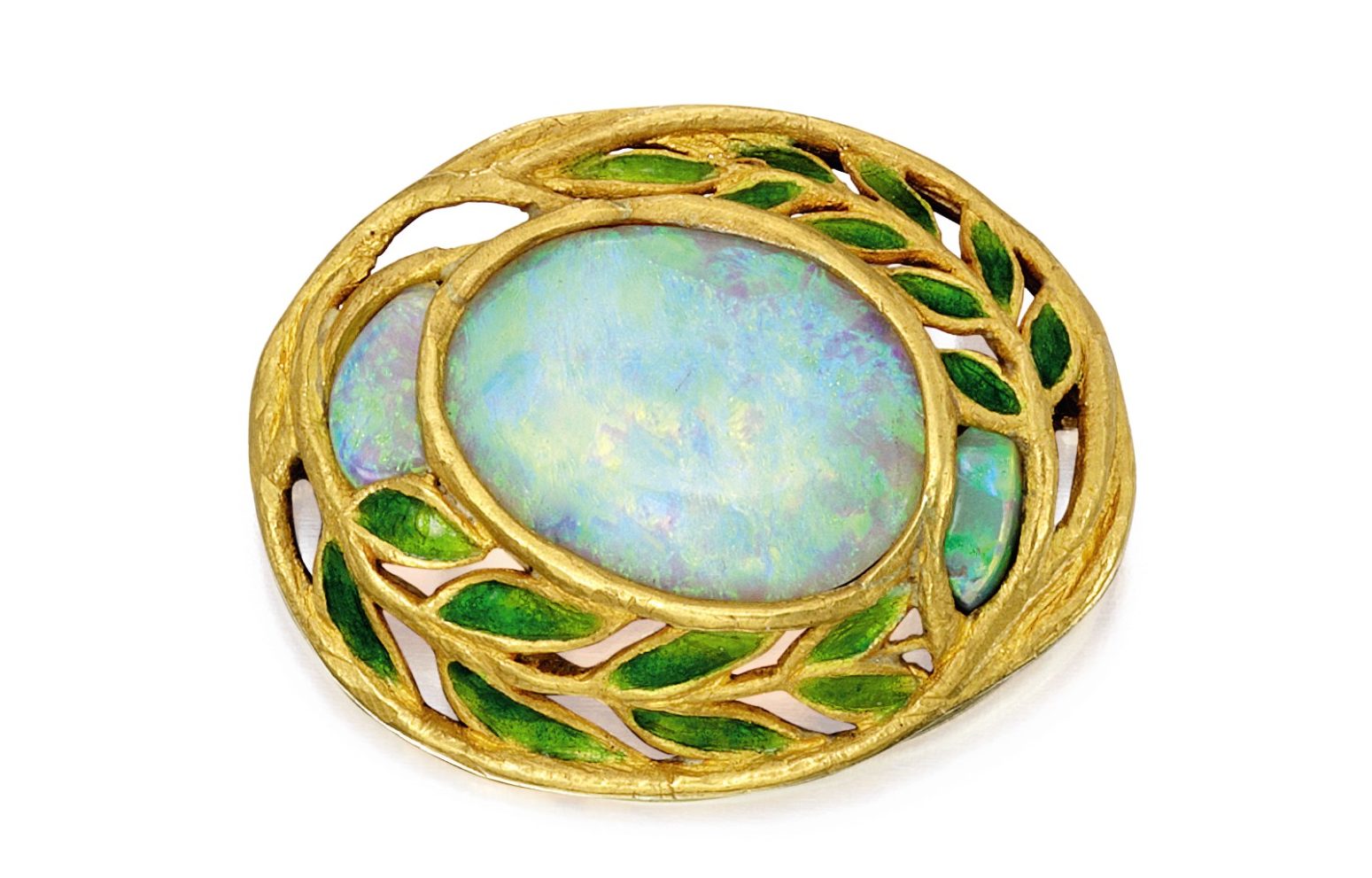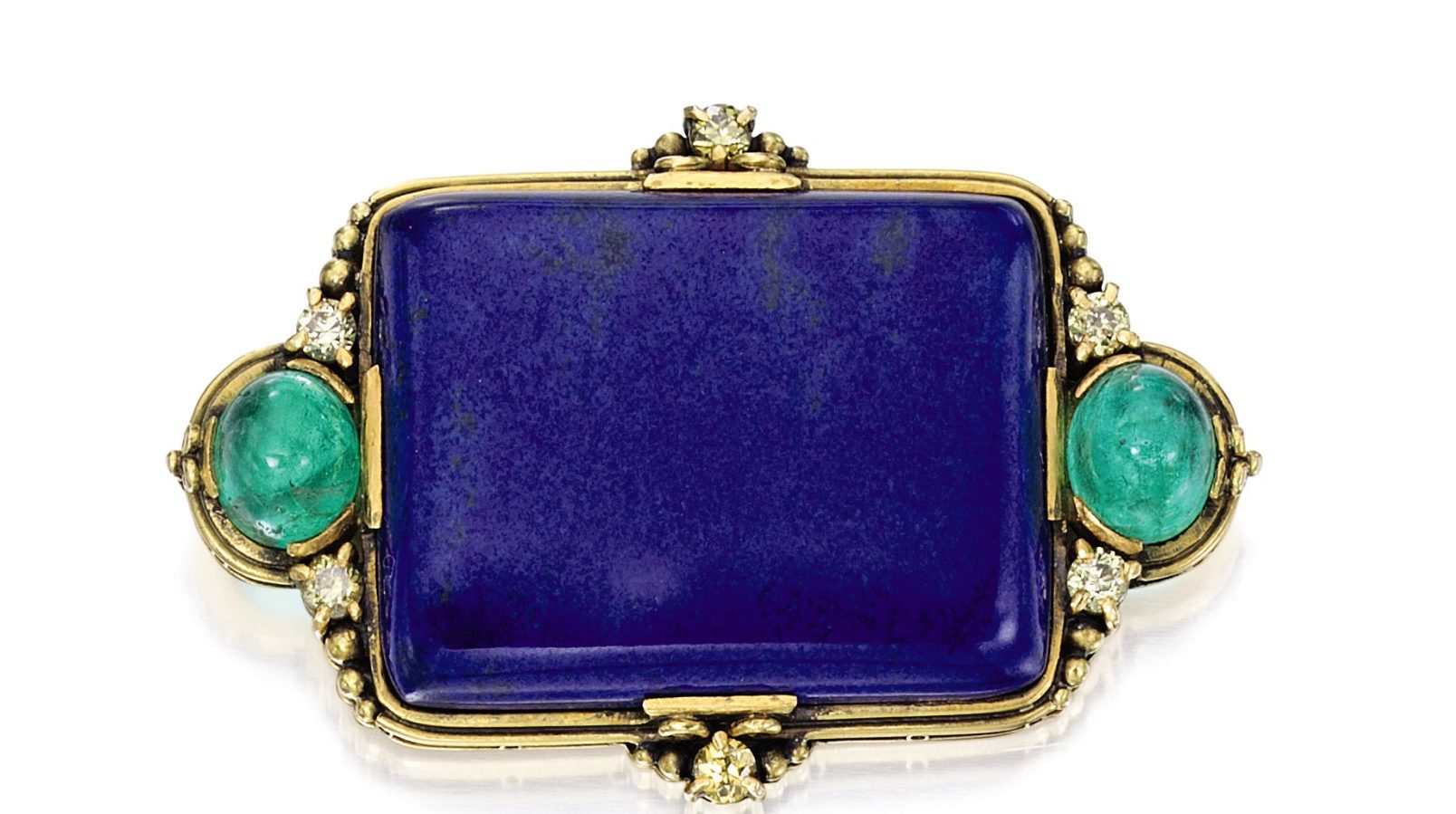A Tale of Three Jewels/Jewelers at Sotheby’s
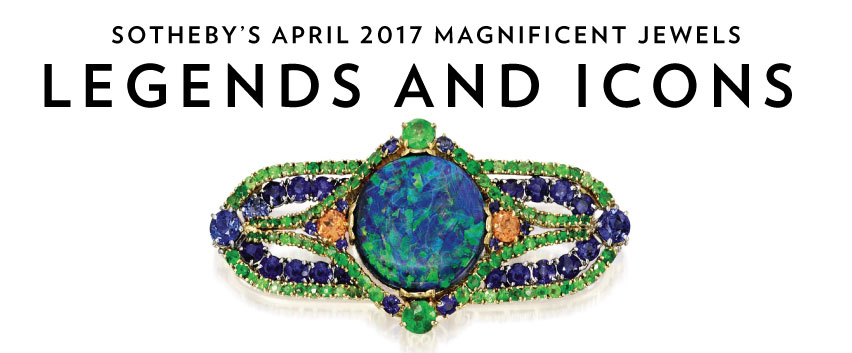
Some of my favorite times of year are during the twice-yearly big auction previews in New York – (along with the museum quality antique jewelry shows). I love hearing the directors of the jewelry departments talk with passion about the pieces that will be going under the hammer while holding the jewels in hand or better yet, trying them on. I become entranced by seeing the different time periods and renowned jewelers and particularly rare and iconic collections represented all in on place.
Last week I was able to share some of best-selling Author Jackie Collins’ collection, which is being sold by Bonhams Los Angeles in May.
Here I bring you some of the storied jewelry of the Sotheby’s Magnificent Jewels, New York sale,
When Frank B Everett (sales director of jewelry) speaks effusively of the tales behind the jewels, they become even more intriguing than imagined. Even if you know the rich storylines behind the gems, when hearing Frank describe them, you find out or see something new in the pieces and the romance is contagious.
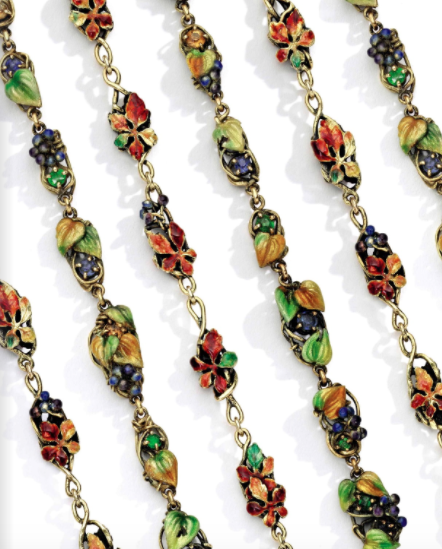
A close up of an enamel leave and berry chain by Louis Comfort Tiffany from the Sotheby’s Magnificent Jewelry Sale, New York
One of the highlights of this auction is the Collection of Jewels by Louis Comfort Tiffany. The son of Charles Lewis Tiffany (who founded Tiffany & Co in 1837), Louis Comfort Tiffany began his career as a painter. “He became well know for his for his rich gemstone colored stained glass lamps, vases and decorative items,” explains Frank. “But the jewelry, which he began designing in 1902 is as much a part of his oeuvre and is an art form in itself.”
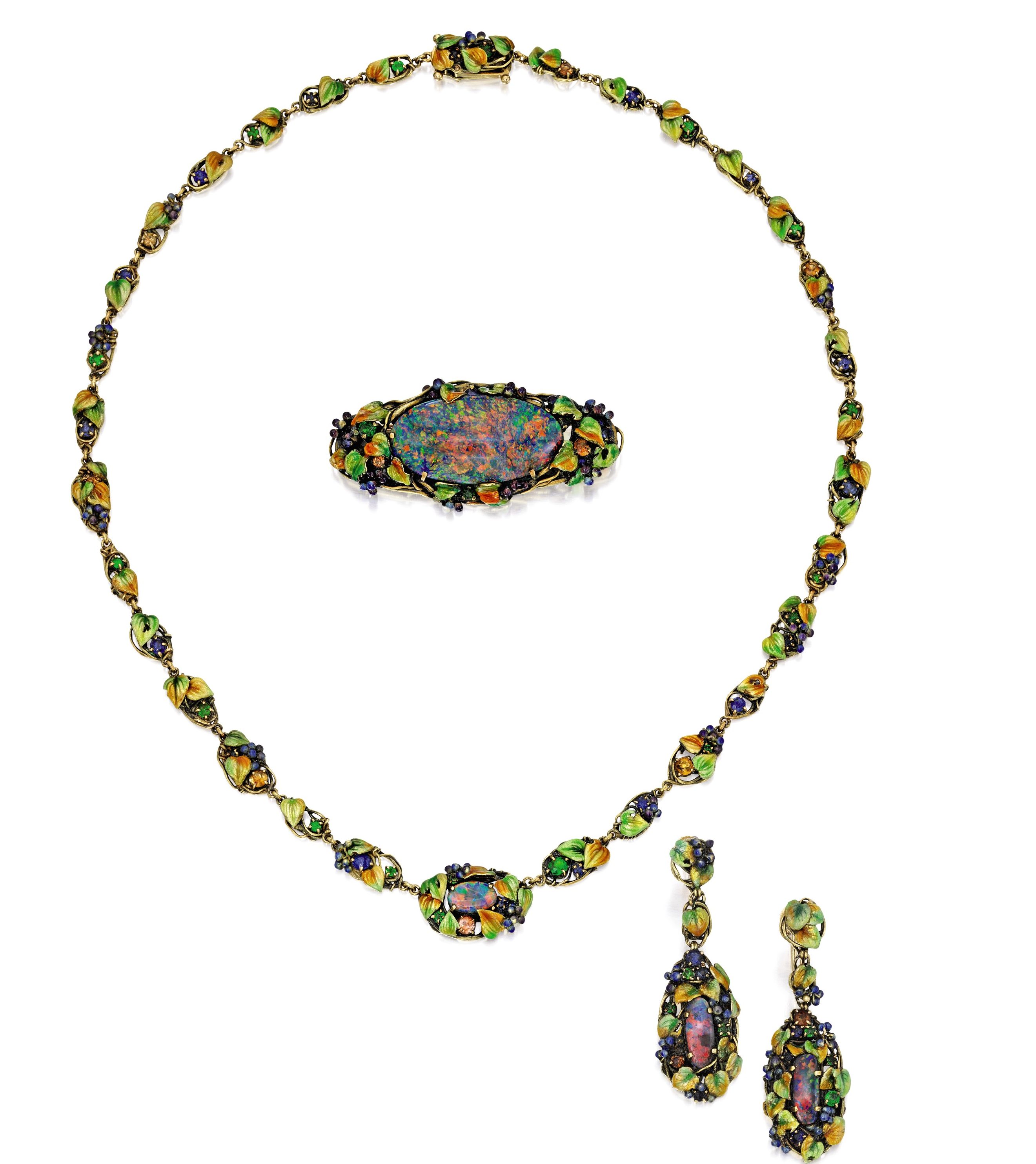
Group of gold, black opal, enamel and colored stone jewelry, Tiffany & Co, Designed by Louis Comfort Tiffany
In 1889, he became enamored and inspired by the ancient techniques of the glasswork of Émile Gallé. “LCT was a master of the Nouveau style,” says Frank. My favorite piece in the collection is a citrine pendant surrounded by pearls and tiny enamel leaves, which also comprise the chain. Frank agrees, “This is best piece of LCT in the sale,” he says. “And the surprise—what truly defines it as a masterpiece in jewelry is the back of the pendant which is an enameled bird nest—talk about details!” He continues, “Another piece with delicate enamel leafs portrays tiny tiny holes which are meant to look like a caterpillar nibbled at it.”
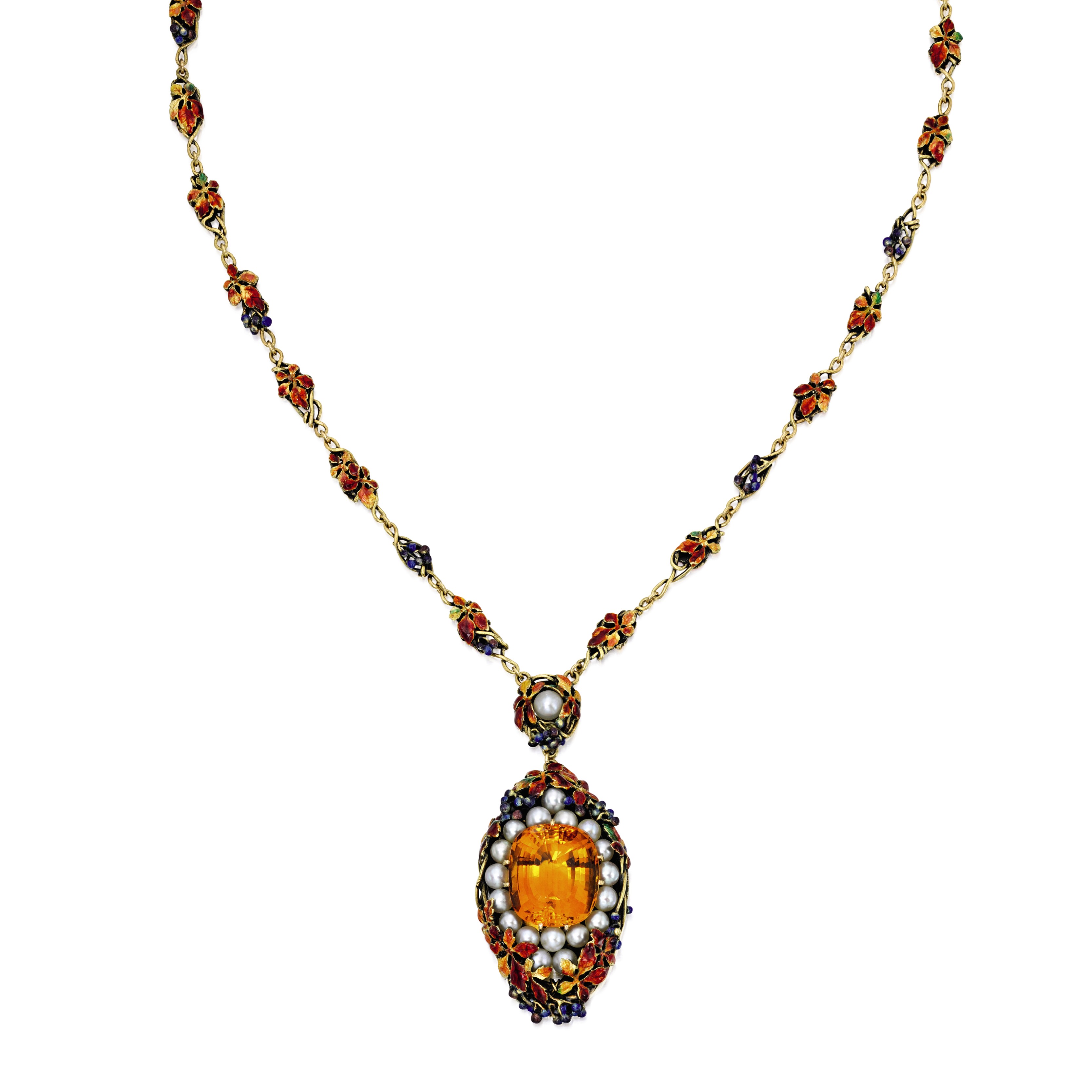
Gold, citrine, pearl and enamel pendant necklace, Tiffany & Co. Designed by Louis Comfort Tiffany
Along with his French contemporaries, Louis Comfort Tiffany was part of the revolution to design pieces that would push the boundaries of what precious and fine jewelry meant—and to create an aesthetic that was not based on the intrinsic value of gemstones but the jewel as a whole—capturing and evoking the organic beauty of the natural world. Working with Montana sapphires, citirines, amethysts, garnets and the mastery of enameling, he created stunning painterly combinations of hues that took shape in striking imaginative compositions that were also highly wearable. “These captured the hearts of collectors and connoisseurs at the time and continued to do so today,” says Frank. “tt is magical and so rare to be able to represent so many of these amazing examples of brooches, earrings and necklaces in one sale.”
- Platinum, jade and sapphire brooch, Tiffany & Co. Designed by Louis Comfort Tiffany
- Platinum, moonstone and sapphire brooch, Tiffany & Co. Designed by Louis Comfort Tiffany
- Three brooches Tiffany & Co, designed by Louise Comfort Tiffany
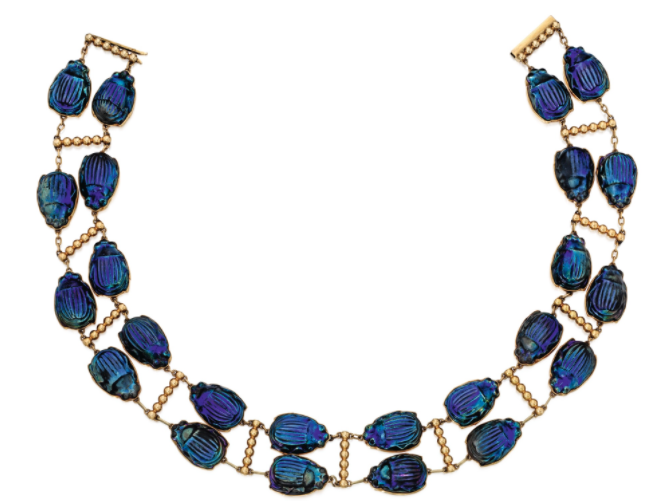
Gold, and Favorite glass ‘Beetle’ Necklace, Tiffany & Co. Designed by Louis Comfort Tiffany
In addition to some awe-inspiring single lots, there are two more stories which are part of the highlights of the sale:
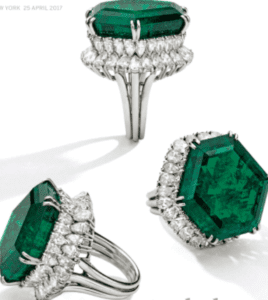 There the over 34 carat Magnificent Legendary Stotesbury Emerald, which has the rich and storied history of being owned in different incarnations by three major American jewelry collectors and designed and redesigned by two of the most renowned jewelry houses.
There the over 34 carat Magnificent Legendary Stotesbury Emerald, which has the rich and storied history of being owned in different incarnations by three major American jewelry collectors and designed and redesigned by two of the most renowned jewelry houses.
Frank highlights the beginning of the story, “The first owner of the mega watt, deep vivid hexagon–shaped Columbian emerald was Evalyn Walsh McLean. The American mining heiress and Washington, D.C. socialite. Pierre Cartier worked to create bespoke jewels—one of which was a pendant in 1908, which featured the emerald, along with the Star of the East, a 94.80 pear-shaped diamonds and a ultra large pearl. But then two years later, Cartier showed Ms. McLean the Hope Diamond, surrounded by diamonds and designed to be worn as a pendant or on a tiara. A deal was made for the McLeans to deliver the emerald and pearl pendant along with $40,000 cash for the Hope.”
In 1911 it was alleged that the payment of the emerald or the Hope was made by the McLeans. However by 1912, the case was settled and Cartier reset the hexagon emerald for Mrs. Edward T. Stoesbury (Eva’s second husband)—who was known for her stunning entertaining, grand balls and philanthropic efforts during World War I and her exquisite taste in gemstones.
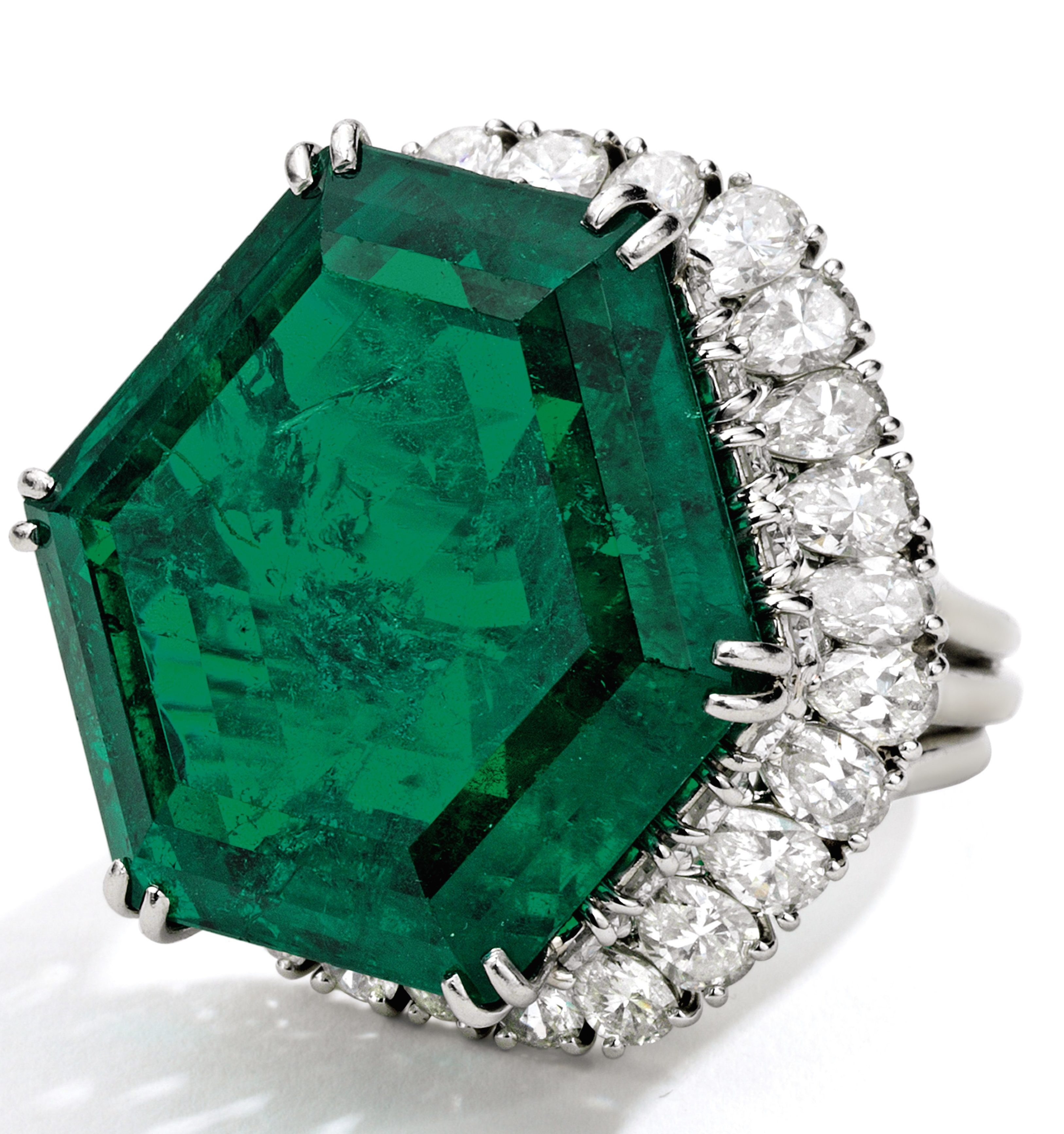
The Stoesbury Emerald set in a ring by Harry Winston
After Mr. Stotesbury’s death in 1938, some of the jewels were sold off and in 1943, it was reported that the emerald was sold to Harry Winston, along with the entire suite that Cartier created to complement the emerald.
Re-fashioned and remounted as a ring by Harry Winston, the Stotesbury Emerald was sold to Mrs. May Bonfils Staton. She was also an American socialite, jewelry collector, whose philanthropic efforts were widespread in her home state of Colorado. In 1962 Parke-Bernet Galleries auctioned off in 1962.
Frank reports, “When the 1962 sale was held, the emerald was not a part of the auction. It finally turned up in 1971 at a Parke-Bernet sale it present Harry Winston mounting. Since that time, it has remained with the same owners, and we are thrilled to be able to have it as one of our major highlights. It is so representative of how each owner puts their own imprint on a jewel and celebrates the owners and renowned houses different stories and styles. This is a true jewelry legend.”
“Speaking of legends,” Frank says, “We have the Art Deco sapphire and diamond brooch by Cartier, which belonged to Mrs. John E. Rovensky.” and then he asks, “You know the story yes?”
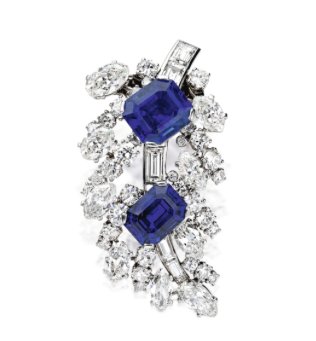
Platinum, diamond and sapphire brooch, Cartier Paris
“Yes.” I say, truly excited to hold this jewel in my hand. “Mrs. Rovensky was formerly Mrs. Morton F. Plant, wife of the owner of the mansion which Cartier traded two natural strands of pearls in 1917.”
After years of renovation, the Cartier mansion, still standing in the same place on 52nd and Fifth Avenue, reopened last year and the story of the trade still continues to be one of the most fascinating New York stories about jewelry to date. Mrs. Plant saw the two stands of pearls in Cartier’s window and told her husband about them. Due to the commercialization of the area previously which was residential and known as Millionaire’s Row, Plant saw an opportunity to sell and Cartier agreed to the exchange for the pearls, which were valued at $1 million.
“Mrs Plant who later became Mrs. Rovensky continued to have jewels designed by Cartier and her collection was sold by Park Bernet Galleries in 1957—the platinum, sapphire and diamond brooch being among the auction.”
There are a few more tales surrounded jewels in the Sotheby’s Magnificent Jewels New York sale, which reminds me of catch phrase that ended each of 1948, Jules Dassin’s film inspired t1958-63 ABC TV crime series The Naked City “There are eight million stories in the naked city; this has been one of them” or in this case…some of them.
If you want to know more, you can catch Frank Files, Frank B Everett’s entertaining and educational video series on Sothebys.com.
All photos courtesy of ©Sotheby’s

